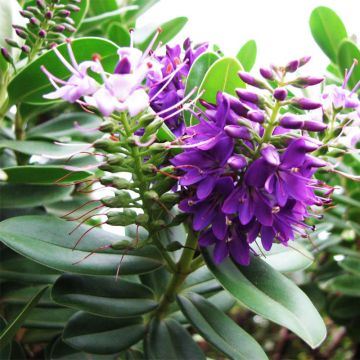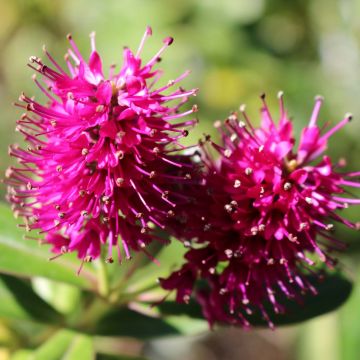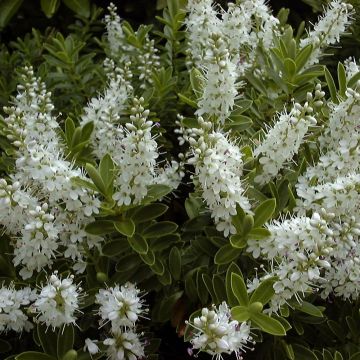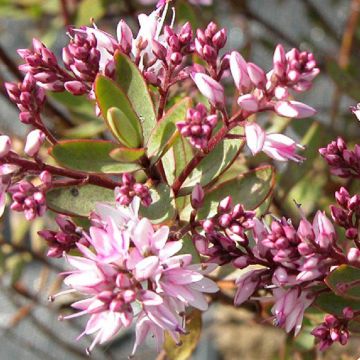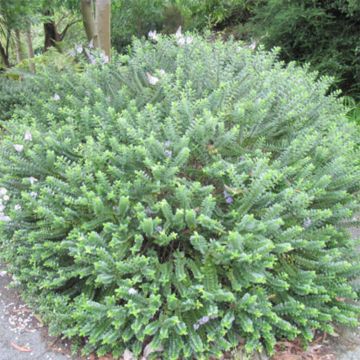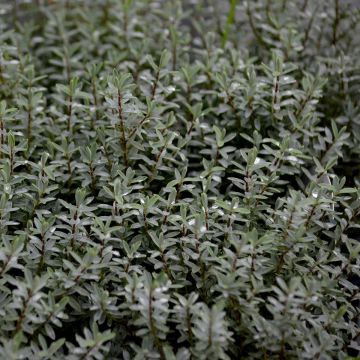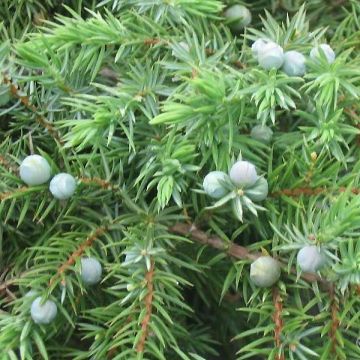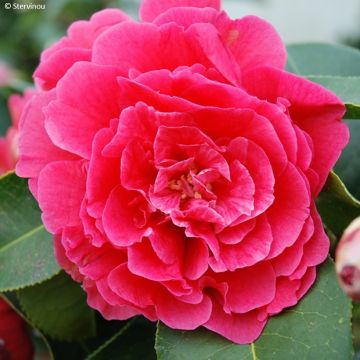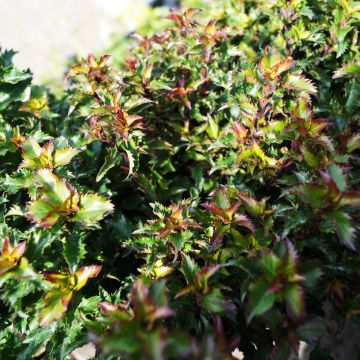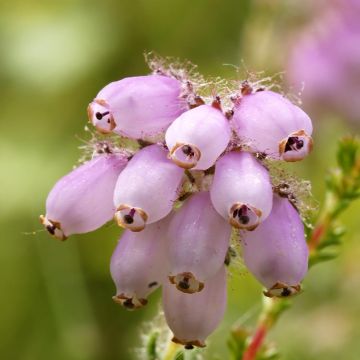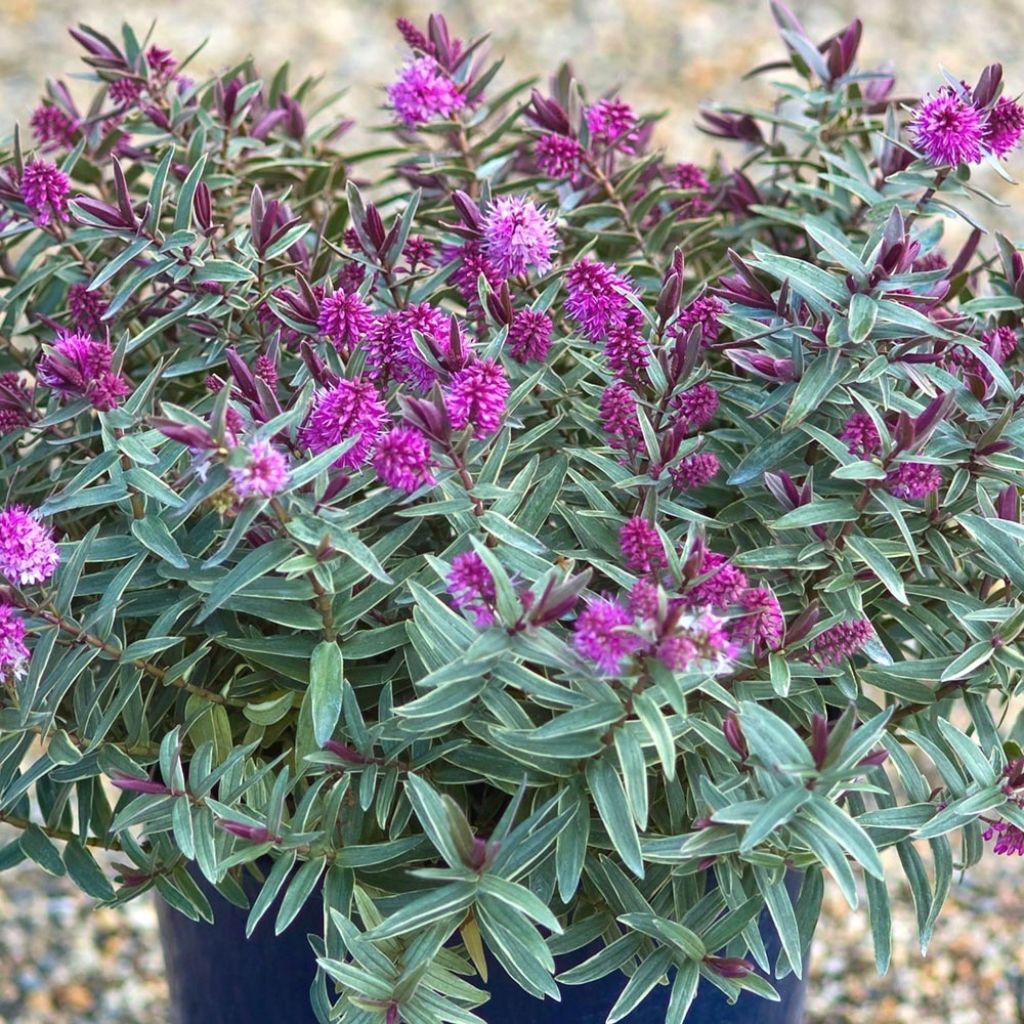

Hebe Marilyn Monroe
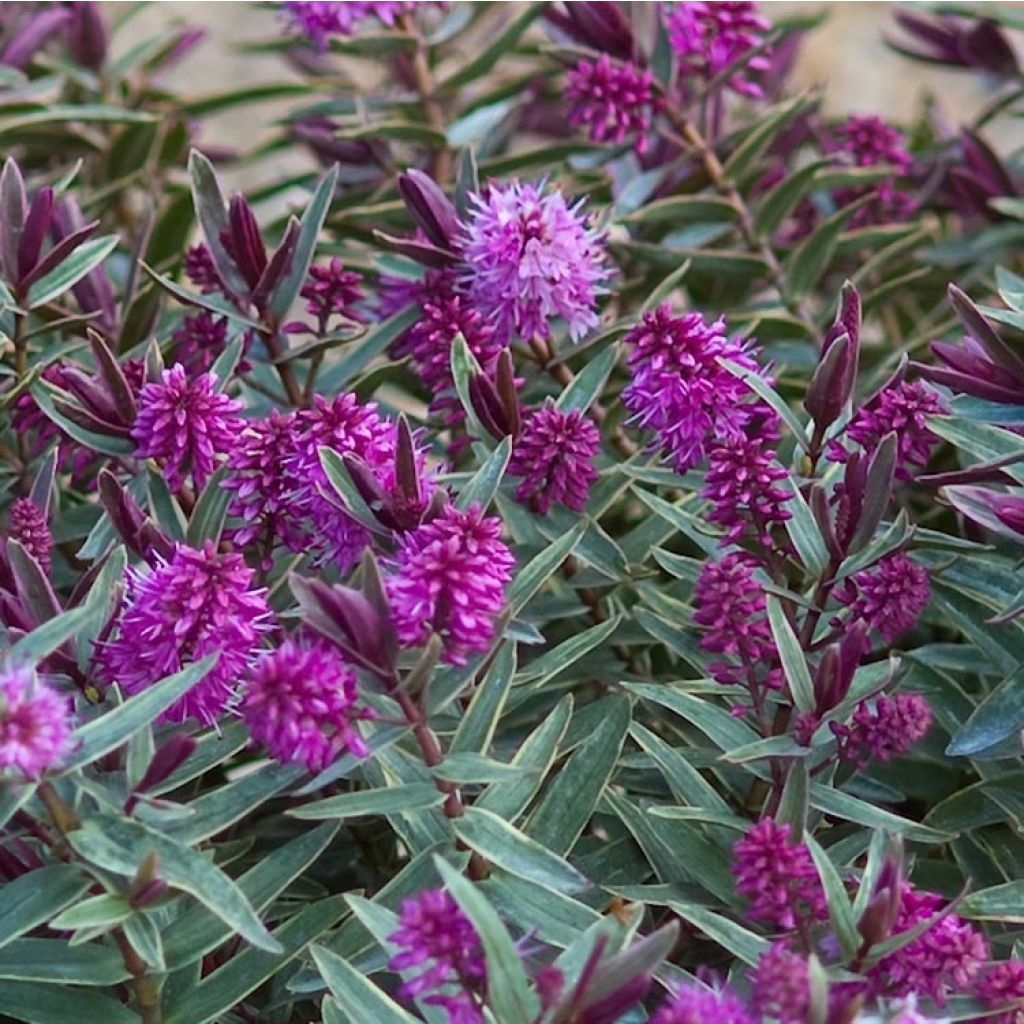

Hebe Marilyn Monroe
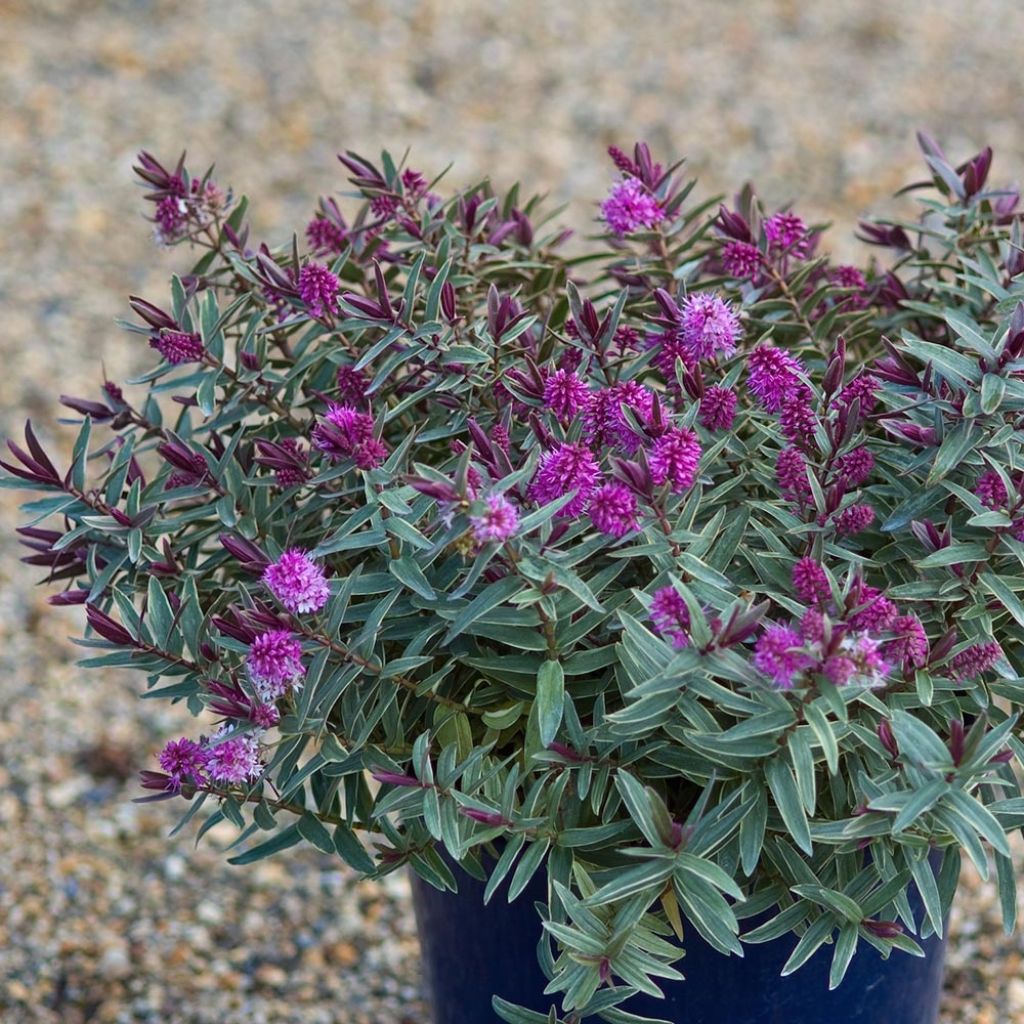

Hebe Marilyn Monroe
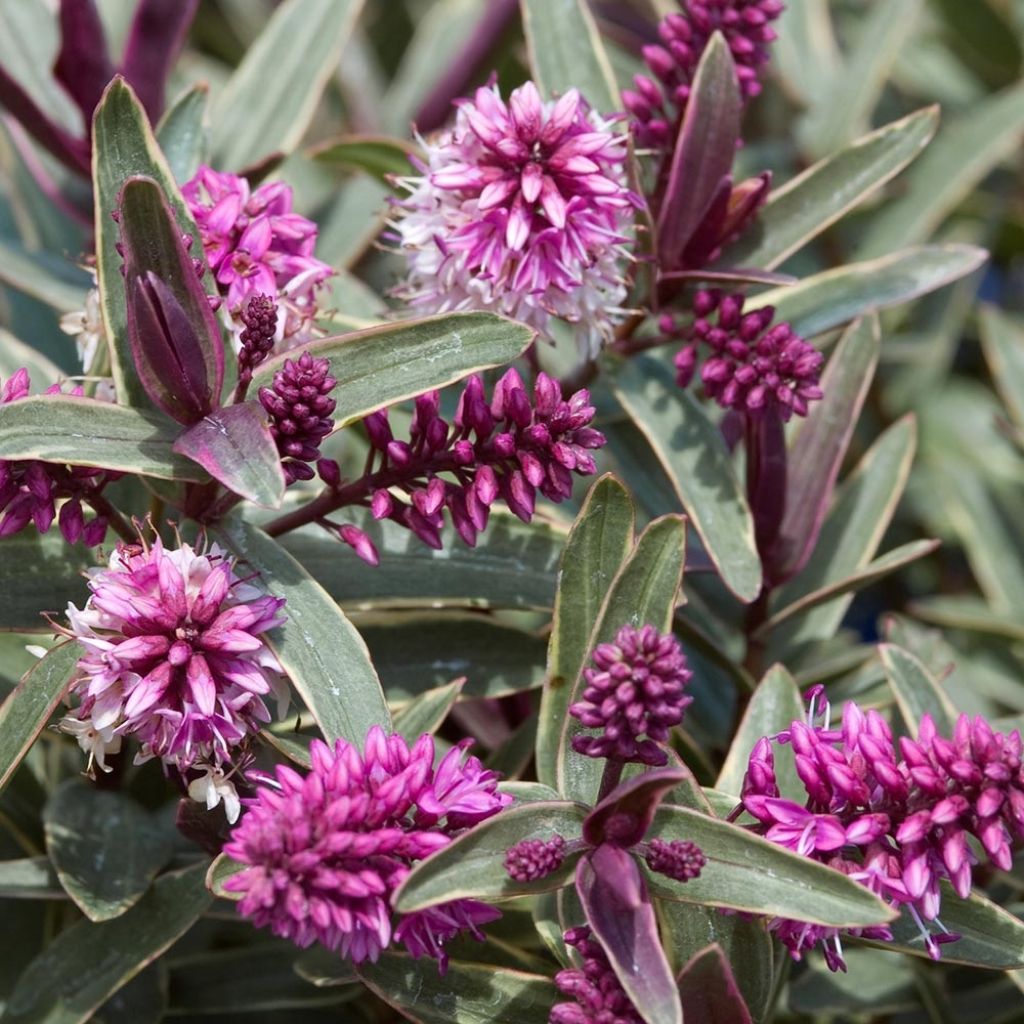

Hebe Marilyn Monroe
Hebe Marilyn Monroe
Hebe Marilyn Monroe®
Shrubby Veronica, Speedwell shrub
Well-packaged young plant, and the recovery after one week seems to be fine. No wilted leaves and the plant is standing upright!
Beatrice, 24/09/2021
This plant carries a 24 months recovery warranty
More information
We guarantee the quality of our plants for a full growing cycle, and will replace at our expense any plant that fails to recover under normal climatic and planting conditions.
From €5.90 for pickup delivery and €6.90 for home delivery
Express home delivery from €8.90.
Delivery to Corse prohibited: UE law prohibits the import of this plant from mainland France to Corse as part of the fight against Xylella fastidiosa. Please accept our sincere apologies.
More information

Does this plant fit my garden?
Set up your Plantfit profile →
Description
What better way to bring a touch of glamour to your garden than with the Hebe 'Marilyn Monroe'®? This hybrid variety of Speedwell shrub offers evergreen foliage in olive green, finely edged with silvery white. The young shoots have a charming deep purple hue. In early summer, a magenta pink flowering completes the picture. This refined and elegant small bush is relatively hardy and easy to grow in regions where winters are not too severe. This variety naturally forms a beautiful evergreen cushion, compact and dense, ornamental all year round. The plant is disease-resistant, undemanding about soil type, and drought resistant once well established in the garden. It is also an excellent plant for the terrace.
Hebe 'Marilyn Monroe'® is a recent hybrid cultivar. It belongs to the family of Plantaginaceae and is related to perennial veronicas. It forms a small regular bush with a compact and rounded habit, reaching about 80 cm (1 ft) in all directions. Its reddish stems, which lignify with age, bear thin, long, thick, and leathery elliptical leaves. They display a centre in olive green, finely edged with greyish white; in the cold, they take on a darker shade. The young shoots are purple. Flowering mainly occurs in May-June, sometimes with a second bloom in autumn. It takes the form of simple lateral inflorescences resembling thin and long spikes of 5 cm (2 in). They are composed of a multitude of small flowers: the floral buds, slightly tinged with white, reveal upon blooming the intensity of their magenta pink colour. Pruning after flowering is recommended to maintain a compact habit and a neat appearance to this Shrubby Veronica.
With relatively slow growth and hardiness (down to -15°C for 'Marilyn Monroe'), Hebes are generally placed alongside perennial plants since their use is closer to these than to shrubs. The 'Marilyn Monroe' variety, on the other hand, naturally develops a compact and dense growth habit well suited for ornamenting terraces and balconies, mixed with e.g. heathers or creeping rosemary. In favourable climates it can create neat and elegant borders throughout summer and be highly decorative in winter. In colder regions, Hebes can be grown in large pots on the terrace and stored in a bright, unheated space during winter.
Report an error about the product description
Hebe Marilyn Monroe in pictures
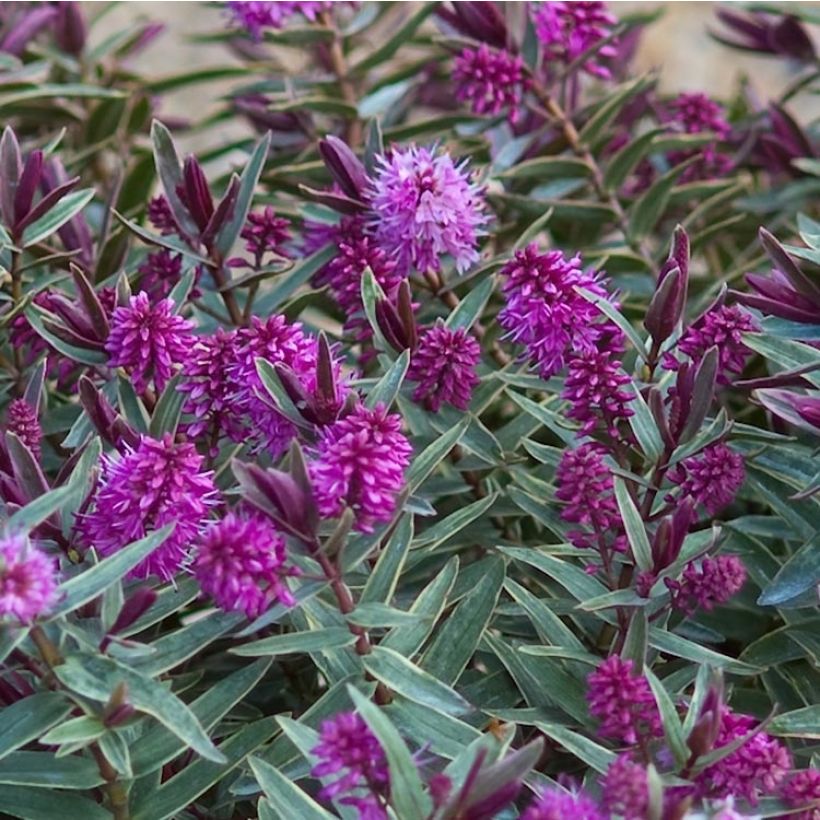

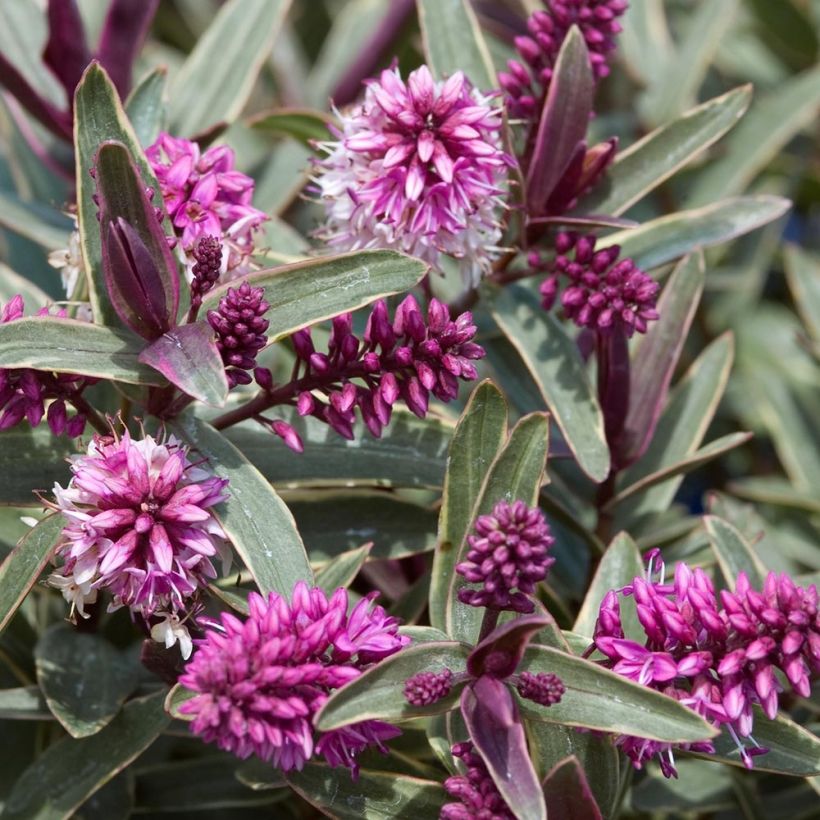

Plant habit
Flowering
Foliage
Botanical data
Hebe
Marilyn Monroe®
Scrophulariaceae
Shrubby Veronica, Speedwell shrub
Cultivar or hybrid
Other Hebe - Shrubby Veronica
Planting and care
The Hebe 'Marilyn Monroe' is preferably planted in spring in a cool climate, or in October in warmer regions. It prefers a sunny site and well-drained, even sandy, soils that are sufficiently deep and well loosened. This plant tolerates sea spray and dry soils in summer once it is well established. In gardens with heavy soils and a wet climate, Hebes should be reserved for rockeries or sloping banks. It enjoys a rich soil that is always well-drained. In the colder regions of Northern Europe it is necessary to protect these shrubs during winter or cultivate them in pots, bringing them indoors during periods of freezing weather. As they grow, pruning with shears can be useful to maintain a dense and compact habit and a tidy appearance.
Planting period
Intended location
Care
-
, onOrder confirmed
Reply from on Promesse de fleurs
Evergreen shrubs
Haven't found what you were looking for?
Hardiness is the lowest winter temperature a plant can endure without suffering serious damage or even dying. However, hardiness is affected by location (a sheltered area, such as a patio), protection (winter cover) and soil type (hardiness is improved by well-drained soil).

Photo Sharing Terms & Conditions
In order to encourage gardeners to interact and share their experiences, Promesse de fleurs offers various media enabling content to be uploaded onto its Site - in particular via the ‘Photo sharing’ module.
The User agrees to refrain from:
- Posting any content that is illegal, prejudicial, insulting, racist, inciteful to hatred, revisionist, contrary to public decency, that infringes on privacy or on the privacy rights of third parties, in particular the publicity rights of persons and goods, intellectual property rights, or the right to privacy.
- Submitting content on behalf of a third party;
- Impersonate the identity of a third party and/or publish any personal information about a third party;
In general, the User undertakes to refrain from any unethical behaviour.
All Content (in particular text, comments, files, images, photos, videos, creative works, etc.), which may be subject to property or intellectual property rights, image or other private rights, shall remain the property of the User, subject to the limited rights granted by the terms of the licence granted by Promesse de fleurs as stated below. Users are at liberty to publish or not to publish such Content on the Site, notably via the ‘Photo Sharing’ facility, and accept that this Content shall be made public and freely accessible, notably on the Internet.
Users further acknowledge, undertake to have ,and guarantee that they hold all necessary rights and permissions to publish such material on the Site, in particular with regard to the legislation in force pertaining to any privacy, property, intellectual property, image, or contractual rights, or rights of any other nature. By publishing such Content on the Site, Users acknowledge accepting full liability as publishers of the Content within the meaning of the law, and grant Promesse de fleurs, free of charge, an inclusive, worldwide licence for the said Content for the entire duration of its publication, including all reproduction, representation, up/downloading, displaying, performing, transmission, and storage rights.
Users also grant permission for their name to be linked to the Content and accept that this link may not always be made available.
By engaging in posting material, Users consent to their Content becoming automatically accessible on the Internet, in particular on other sites and/or blogs and/or web pages of the Promesse de fleurs site, including in particular social pages and the Promesse de fleurs catalogue.
Users may secure the removal of entrusted content free of charge by issuing a simple request via our contact form.
The flowering period indicated on our website applies to countries and regions located in USDA zone 8 (France, the United Kingdom, Ireland, the Netherlands, etc.)
It will vary according to where you live:
- In zones 9 to 10 (Italy, Spain, Greece, etc.), flowering will occur about 2 to 4 weeks earlier.
- In zones 6 to 7 (Germany, Poland, Slovenia, and lower mountainous regions), flowering will be delayed by 2 to 3 weeks.
- In zone 5 (Central Europe, Scandinavia), blooming will be delayed by 3 to 5 weeks.
In temperate climates, pruning of spring-flowering shrubs (forsythia, spireas, etc.) should be done just after flowering.
Pruning of summer-flowering shrubs (Indian Lilac, Perovskia, etc.) can be done in winter or spring.
In cold regions as well as with frost-sensitive plants, avoid pruning too early when severe frosts may still occur.
The planting period indicated on our website applies to countries and regions located in USDA zone 8 (France, United Kingdom, Ireland, Netherlands).
It will vary according to where you live:
- In Mediterranean zones (Marseille, Madrid, Milan, etc.), autumn and winter are the best planting periods.
- In continental zones (Strasbourg, Munich, Vienna, etc.), delay planting by 2 to 3 weeks in spring and bring it forward by 2 to 4 weeks in autumn.
- In mountainous regions (the Alps, Pyrenees, Carpathians, etc.), it is best to plant in late spring (May-June) or late summer (August-September).
The harvesting period indicated on our website applies to countries and regions in USDA zone 8 (France, England, Ireland, the Netherlands).
In colder areas (Scandinavia, Poland, Austria...) fruit and vegetable harvests are likely to be delayed by 3-4 weeks.
In warmer areas (Italy, Spain, Greece, etc.), harvesting will probably take place earlier, depending on weather conditions.
The sowing periods indicated on our website apply to countries and regions within USDA Zone 8 (France, UK, Ireland, Netherlands).
In colder areas (Scandinavia, Poland, Austria...), delay any outdoor sowing by 3-4 weeks, or sow under glass.
In warmer climes (Italy, Spain, Greece, etc.), bring outdoor sowing forward by a few weeks.

































